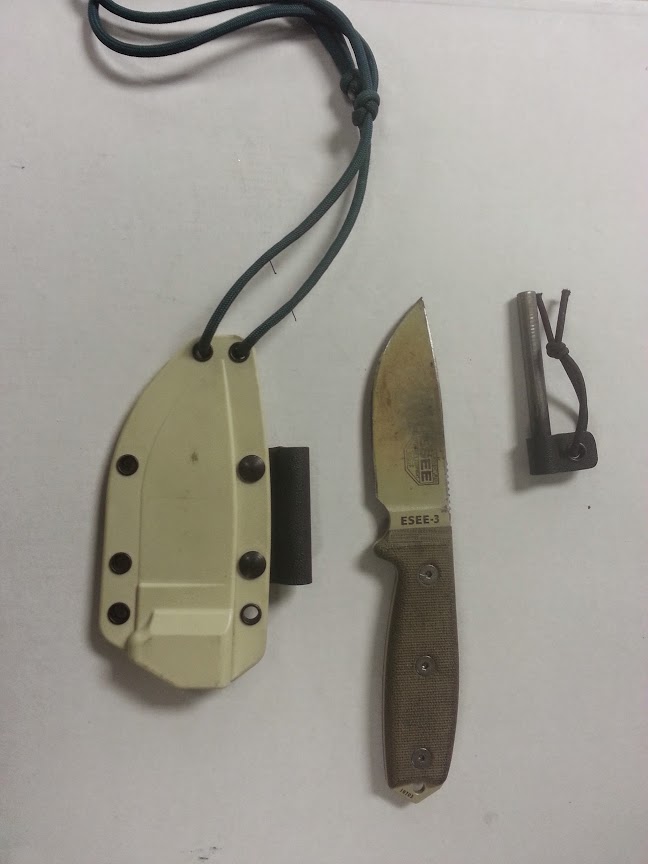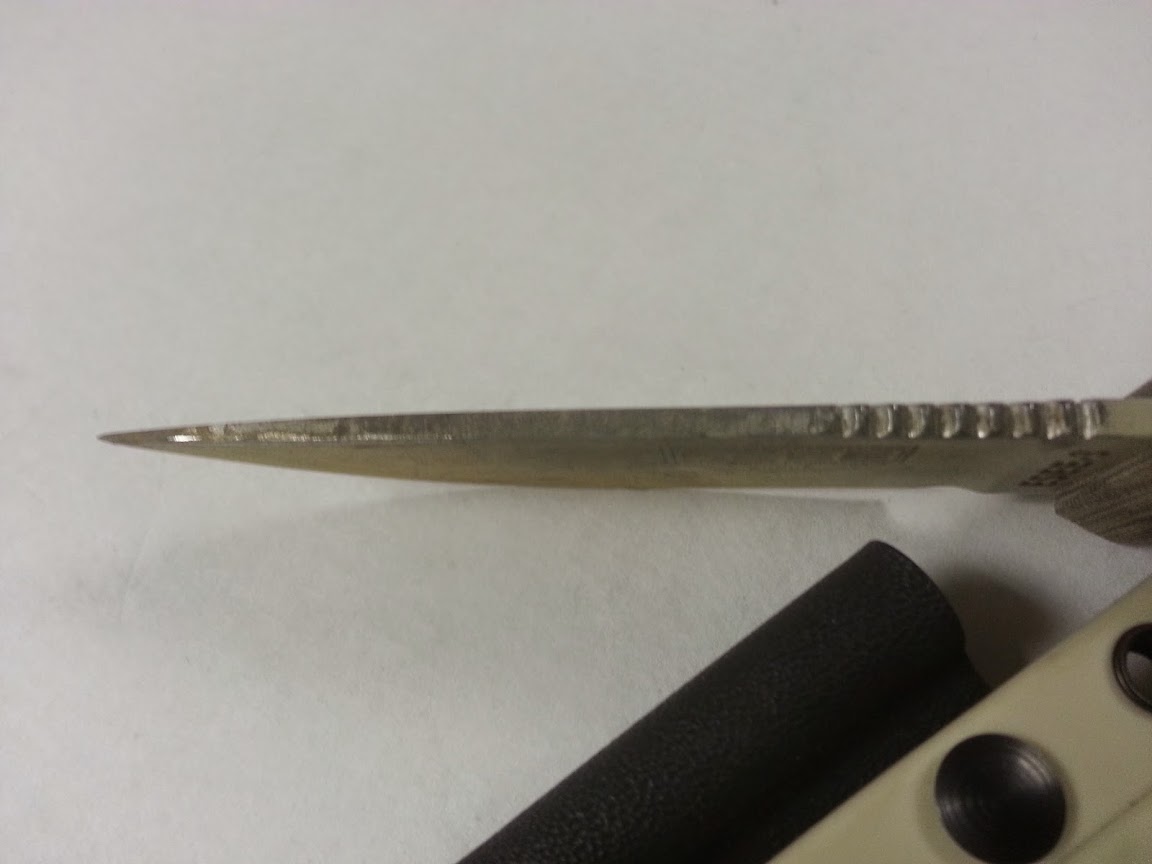by Woodsbum
Not that I am revealing any great secrets here, but I am a bit of a knife freak. I love the simplicity and functionality of a good knife. In all seriousness, knives have saved my hind quarters more than any other tool I use. Due to this harsh reality of me doing stupid things that require solid tools to bail me out, I have NO problem spending large sums of money on quality knives. Enter…. The Wolf Creek Forge.
This was actually my first custom knife that I purchased. I have taken more than my share of production knives and customized them, but until I got this I had never actually purchased a hand made knife.
I got this used (because that was what I could justify on a knife) so I don’t have many specs at this time. I contacted the maker to see if they did and will update this post if/when those specs are sent. Instead, I will look at the knife and tell you about it from a use perspective.
First off, this knife has seen a fair amount of field use. If you look at the pictures it is fairly evident from the small rust spots and discoloration at the tip from batoning/prying wood apart with it. Yes, there are a few rust spots. Remember that I live in a VERY wet part of the country where I swear even iron rich blood will rust in your arteries.

Wolf Creek Forge Bushcrafter
Because of the way the sheath is made, I use this knife a lot while backpacking. The belt loop will actually fit all the way around the webbing on my Osprey waist belt. This makes it really nice to access when wearing the pack. Even though I am not fond of sheaths that use a snap for knife retention this knife fits quite deeply into the sheath pocket. It makes inserting and removal from the sheath quite easy, especially when fighting with bulky gear.
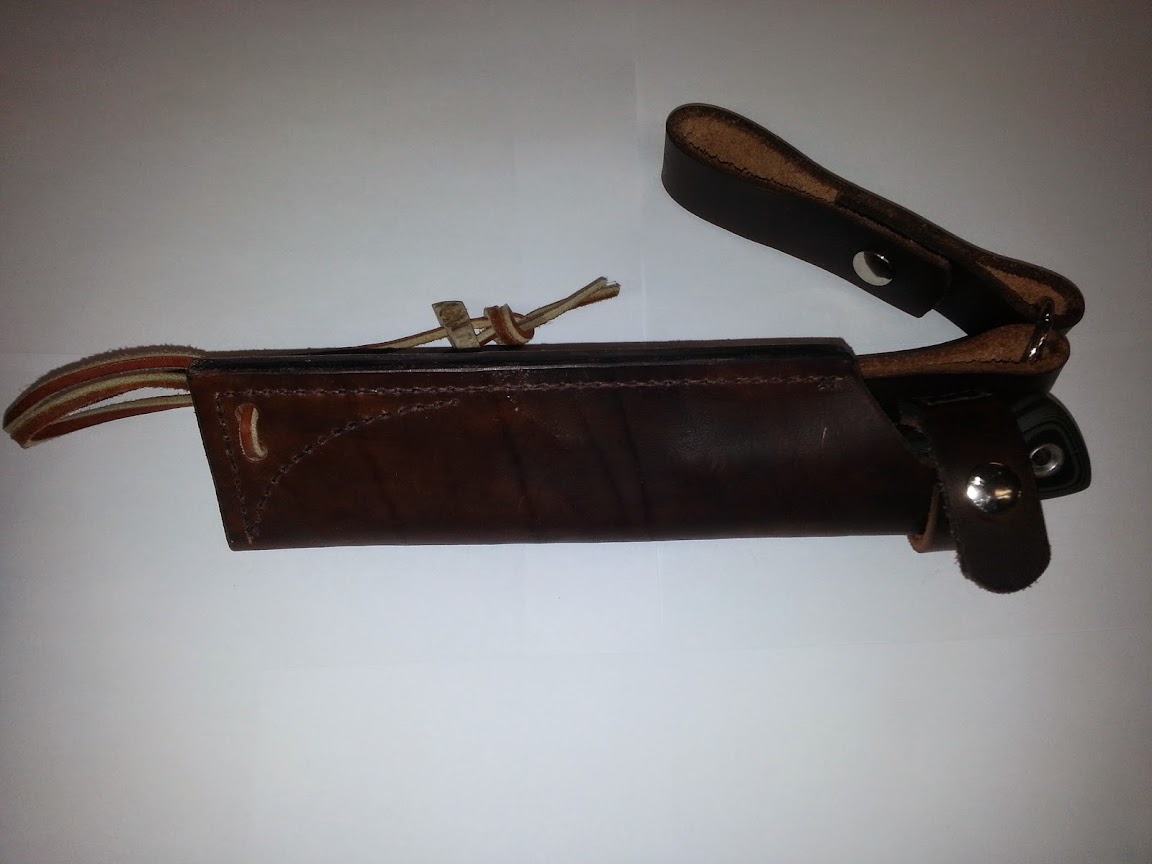
WCF – Sheath
In order for my knives to stay relatively rust free I spray oil down my knife sheaths. This keeps them conditioned and helps with the squishy environment in which I live. Unfortunately, it doesn’t always work so keep that in mind while checking out my pictures. Most of the “patina” and discoloration occurred during field use over periods of time where I had no access to oil, polishers, etc. Remember…. I USE my gear, but don’t ABUSE my gear. Most knife makers will tell you that high carbon steel knives are going to get discolored if you use them.
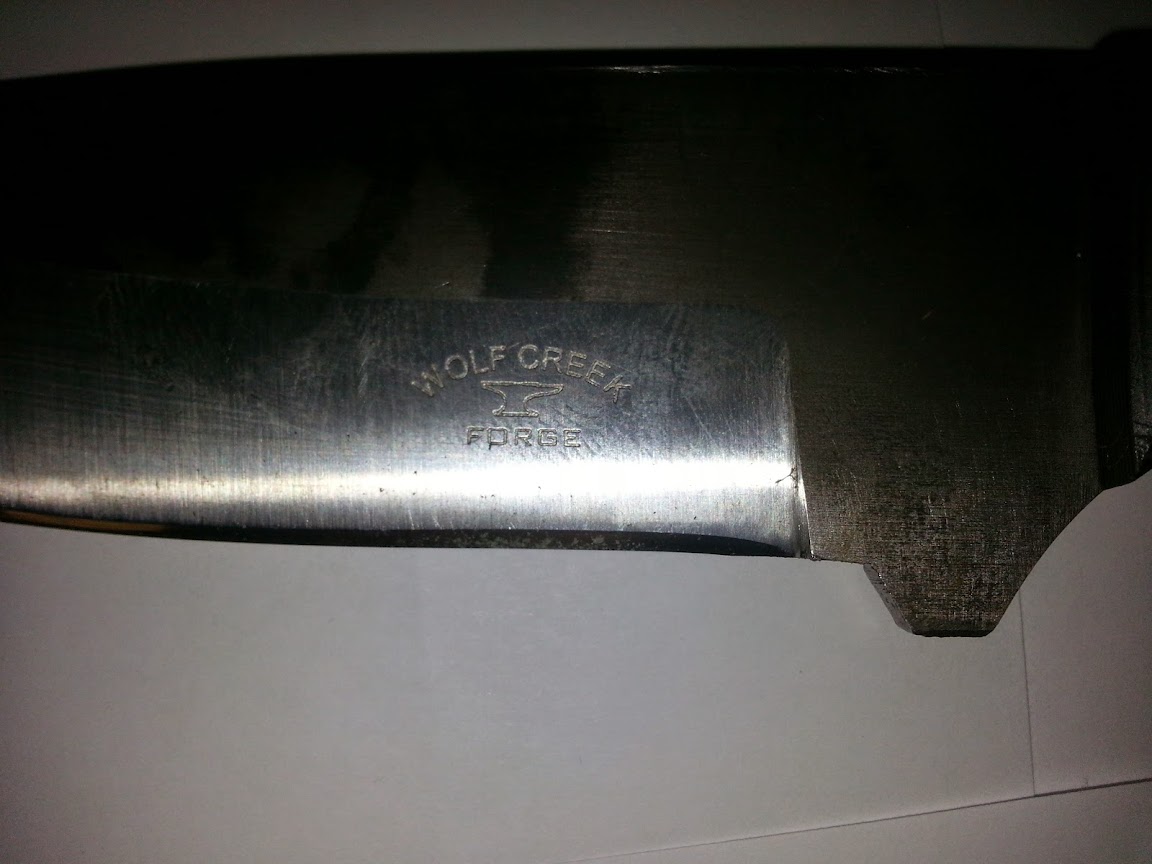
WCF – Bushcrafter
The micarta handles actually hold up quite well to heavy field use. You can see where I have knocked the handle around a bit while out in the bush.
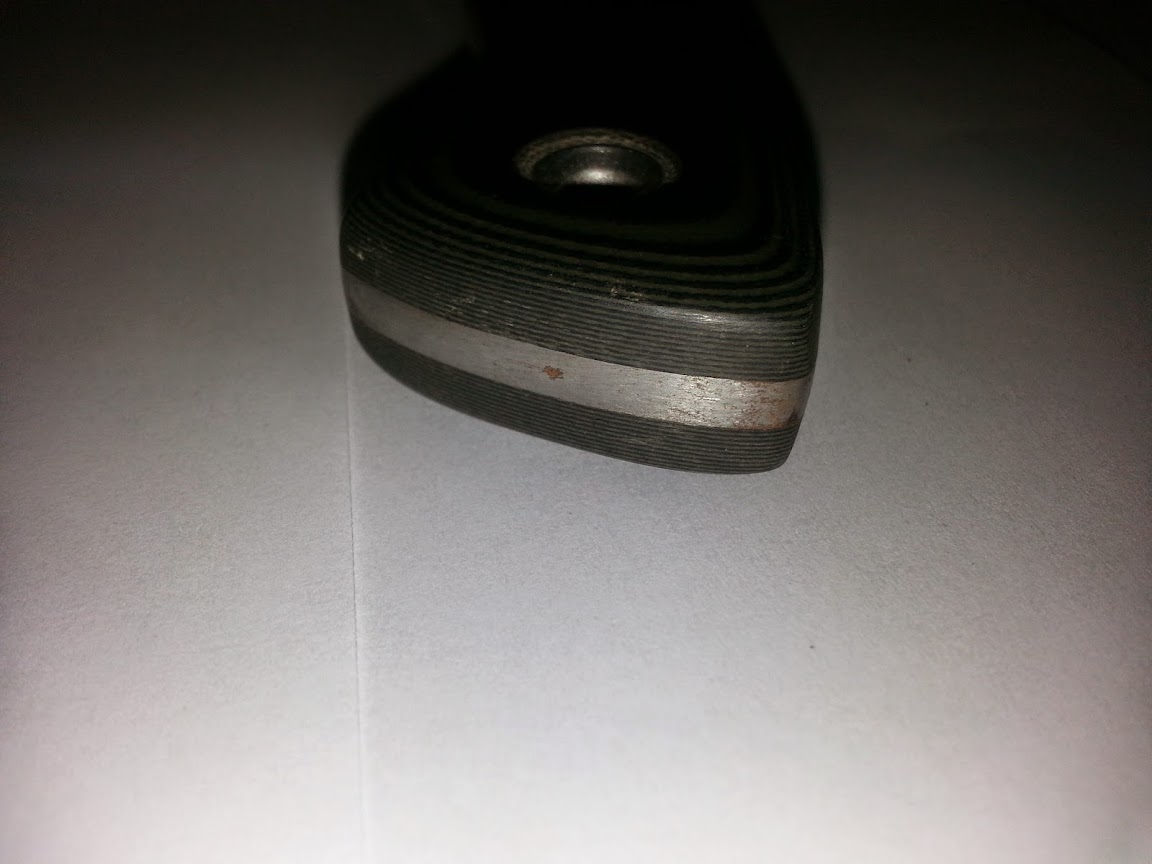
WCF – Bushcrafter
The only complaints I have at all about this knife is the fact that it doesn’t get as sharp as many other customs I have nor is the spine squared off so I can use it with a firesteel. It gets sharp, but not that hair popping sharp that you get with Adventure Sworn or Turley customs. I have been looking and I think that it has to do with the way that they are ground. This guy will stay the same sharpness for what seems like FOREVER without getting dull. It just won’t get quite as sharp. My Adventure Sworn will sharpen back up to crazy levels quickly, but it will dull quicker than this one does. The same goes with my daughter’s Turley, my Matt Paul, son’s Primitive Edge, the SBT I used for a while, and a few others I ran across in the bush. This characteristic really makes this knife a great field choice for hard work. I tend to use the heck out of it during a trip and just strop it as needed on the inside of my belt. This works wonders.

WCF – Bushcrafter
All said and done, I like this knife for hard use camping. It doesn’t need as much care or upkeep as other bushcraft knives I have or have used. Feather/fuzz sticks, split wood fires, general use cutting, prying, cleaning fish/grouse, are all easy chores for this guy and it does its job well. I could think of numerous other, higher priced knives that don’t do as good of a job as this does.

WCF – Bushcrafter
I would recommend this as a great all around knife for those new to bushcrafting. It does everything you would want it to do and does it without making you modify your techniques. Really and truly it is a great and solid knife.

WCF and Mora Classic










